The Scoville Scale is a measurement system that ranks chili peppers by heat intensity, from zero (bell peppers) to over 2 million Scoville Heat Units (SHU) for the world's hottest varieties. Understanding this scale helps home cooks and chefs select appropriate peppers for recipes while avoiding dangerous heat levels. This guide provides verified Scoville ratings, safety guidelines, and practical cooking techniques based on laboratory-tested data—not anecdotal claims. Whether you're wondering how hot is a jalapeño, comparing habanero vs. ghost pepper heat, or seeking safe handling protocols for super-hots, you'll find accurate, actionable information here.
| Most Searched Pepper Varieties | Scoville Heat Units (SHU) | Heat Level Description | Common Culinary Uses |
|---|---|---|---|
| Bell Pepper | 0 SHU | No heat, sweet flavor | Stuffed peppers, salads, stir-fries |
| Jalapeño | 2,500–8,000 SHU | Moderate heat with grassy notes | Salsas, nacho toppings, pickled jalapeños |
| Habanero | 100,000–350,000 SHU | Intense fruity heat with delayed burn | Caribbean sauces, hot sauces, marinades |
| Ghost Pepper | 855,000–1,041,427 SHU | Extreme heat with smoky sweetness | Commercial hot sauces, challenge dishes |
| Carolina Reaper | 1,400,000–2,200,000 SHU | World's hottest edible pepper | Record-breaking hot sauces, specialty foods |
What Is the Scoville Scale and How Does It Work?
The Scoville Scale measures chili pepper heat through Scoville Heat Units (SHU), developed by pharmacist Wilbur Scoville in 1912. Originally determined by diluting pepper extract until heat becomes undetectable by human testers, modern labs now use high-performance liquid chromatography (HPLC) for precise, objective measurements of capsaicin—the compound responsible for heat. This scientific advancement ensures consistent heat level verification across all chili varieties, making the Scoville chart reliable for both culinary professionals and home cooks wondering how hot is my pepper.
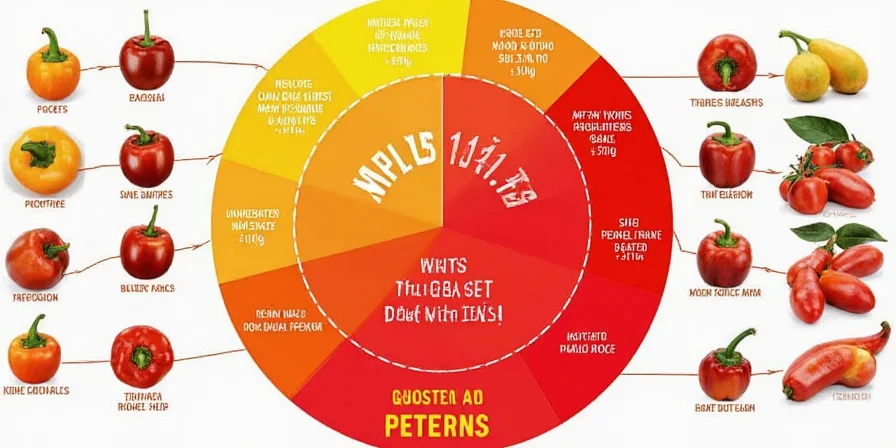
Scoville Scale Chart: Complete Pepper Heat Reference
Pepper heat varies significantly based on growing conditions—soil, climate, and cultivation can cause 30-40% SHU variance within the same variety. The following table shows verified ranges from laboratory testing, not anecdotal reports:
| Pepper Variety | Verified SHU Range | Comparable Heat Experience | Safe Handling Guidelines |
|---|---|---|---|
| Bell Pepper | 0 | No heat sensation | No special precautions needed |
| Jalapeño | 2,500–8,000 | Mild to moderate warmth on lips/tongue | Wash hands after handling |
| Serrano | 10,000–23,000 | Sharp heat that builds quickly | Avoid touching eyes after handling |
| Hatch Green Chile | 2,500–30,000 | Mild to medium with earthy flavor | Wash hands thoroughly after handling |
| Habanero | 100,000–350,000 | Intense burn appearing after 10-15 seconds | Wear gloves; avoid inhaling fumes |
| Ghost Pepper (Bhut Jolokia) | 855,000–1,041,427 | Extreme burning lasting 20+ minutes | Gloves required; eye protection recommended |
| Carolina Reaper | 1,400,000–2,200,000 | Severe, prolonged burning sensation | Professional handling only; full protective gear |
| Dragon's Breath | 2,480,000 (unverified) | Reported to cause temporary numbness | Not for culinary use; experimental only |
How to Use the Scoville Scale for Cooking: Practical Applications
Understanding SHU values helps prevent culinary disasters and enhances flavor profiles. Whether you're trying to determine how hot is a habanero compared to jalapeño or selecting peppers for specific dishes, these evidence-based techniques deliver consistent results:
Pepper Heat Control Methods
Contrary to popular belief, pepper seeds contain minimal capsaicin—the heat concentrates in the white placental ribs. For precise heat management:
- For mild jalapeños: Remove all white ribs and membranes
- For medium habaneros: Keep half the ribs for balanced fruitiness and heat
- For extreme peppers (500,000+ SHU): Use professional-grade gloves and respirators
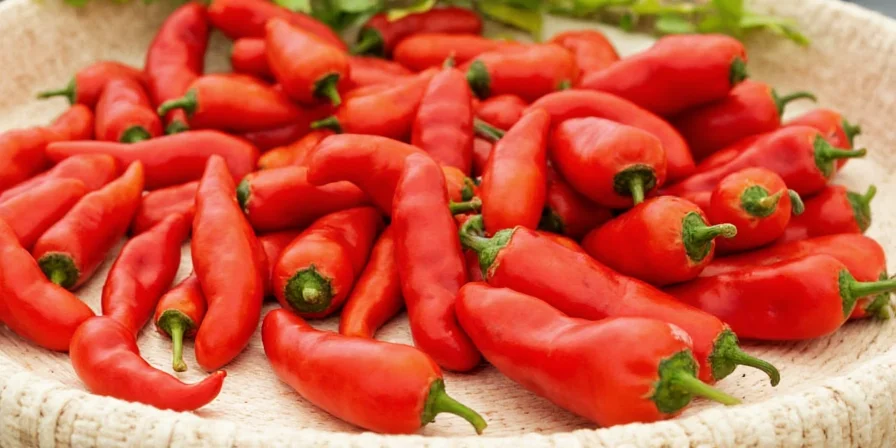
Safety Protocols by Heat Level: Avoiding Medical Emergencies
Peppers exceeding 500,000 SHU require serious precautions. Medical literature documents cases of gastric issues, breathing difficulties, and skin reactions from improper handling. Follow these verified safety protocols:
Essential Safety Guidelines for Common Peppers (Under 50,000 SHU)
- Wash hands thoroughly with soap after handling
- Avoid touching eyes, face, or sensitive skin areas
- Use separate cutting boards for hot peppers
- Rinse cutting surfaces with vinegar solution after use
Critical Safety Measures for Super-Hot Peppers (Over 500,000 SHU)
- Medical-grade nitrile gloves (standard rubber degrades)—change after 20 minutes
- Eye protection to prevent accidental splashes
- Avoid inhaling fumes during cutting (capsaicin becomes airborne)
- Emergency decontamination: 3% hydrogen peroxide for skin, sterile saline for eyes
- Never use bleach—creates toxic chlorine gas when mixed with capsaicin
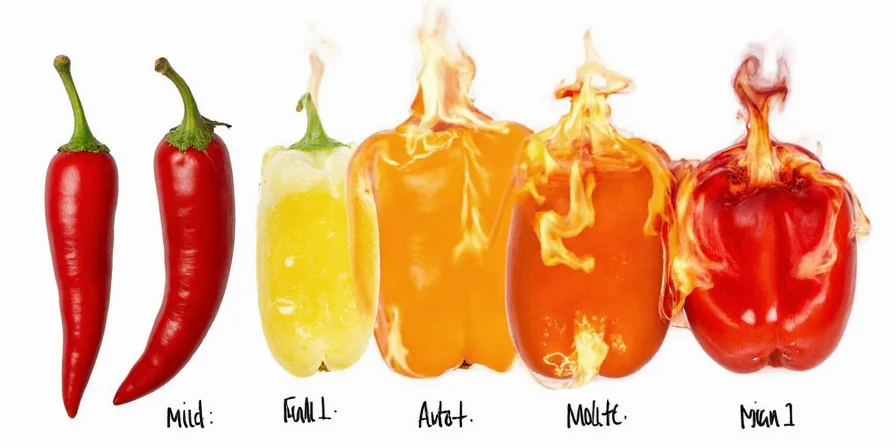
How to Reduce Heat in Overly Spicy Dishes: Evidence-Based Methods
When wondering how to fix a dish that's too spicy, these scientifically validated techniques work best:
- Dairy products (milk, yogurt, sour cream) provide temporary relief but don't remove capsaicin
- Acidic ingredients (lemon juice, vinegar) help break capsaicin bonds
- Starchy components (rice, potatoes, bread) absorb capsaicin effectively
- Dilution with additional non-spicy ingredients remains the most reliable solution
- Avoid sugar—it amplifies perceived heat through trigeminal nerve interaction
Common Questions About the Scoville Scale Answered
These frequently searched questions address the most common user queries about pepper heat levels:
How hot is a jalapeño on the Scoville scale?
Jalapeños range from 2,500 to 8,000 Scoville Heat Units (SHU), placing them in the mild-to-medium heat category. For comparison, a bell pepper measures 0 SHU while a habanero ranges from 100,000 to 350,000 SHU—making it approximately 12-40 times hotter than a jalapeño.
What's the difference between Scoville units and SHU?
Scoville units and SHU (Scoville Heat Units) refer to the same measurement system. One SHU represents the degree of dilution needed before capsaicin becomes undetectable to human testers. Modern labs use HPLC testing to calculate SHU without human tasting panels.
How do I verify a pepper's actual heat level before use?
Obtain lab-certified SHU documentation from reputable suppliers. For home growers, use HPLC testing services through agricultural universities. Never rely on visual characteristics alone—field tests show up to 50% variance in store-bought peppers labeled as specific varieties.
Can extreme heat peppers cause health problems?
Peppers above 800,000 SHU can cause temporary breathing difficulties, skin reactions, and stomach issues. Consuming peppers above 1,500,000 SHU risks more serious complications including gastric perforation. Always consult a physician before consuming super-hots if you have gastrointestinal conditions.
Why do SHU ranges vary so much between sources?
Natural biological variation accounts for 30-40% fluctuation. Inconsistent testing methodologies contribute to wider discrepancies—older human-panel tests yielded higher readings than modern chromatography. Reputable sources cite testing methodology and sample origin; avoid sources without this transparency.
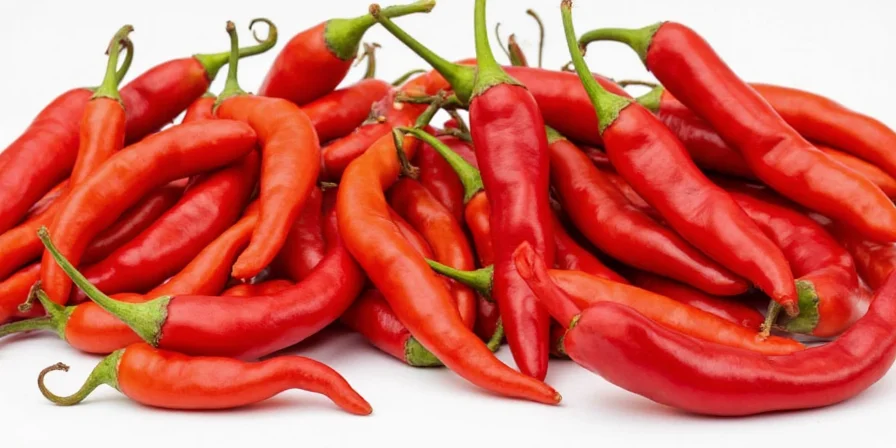
Conclusion: Using the Scoville Scale Safely and Effectively
Understanding the Scoville Scale helps cooks of all levels select appropriate peppers for their recipes while avoiding dangerous heat levels. By recognizing that how hot is a habanero differs significantly from how hot is a jalapeño, you can create balanced dishes that showcase flavor without overwhelming heat. Always start with less pepper than you think you need—you can add more heat, but you can't remove it once added. For super-hot varieties, prioritize safety with proper handling equipment and emergency protocols. The most successful spicy dishes balance heat with complementary flavors, creating memorable culinary experiences rather than heat challenges.

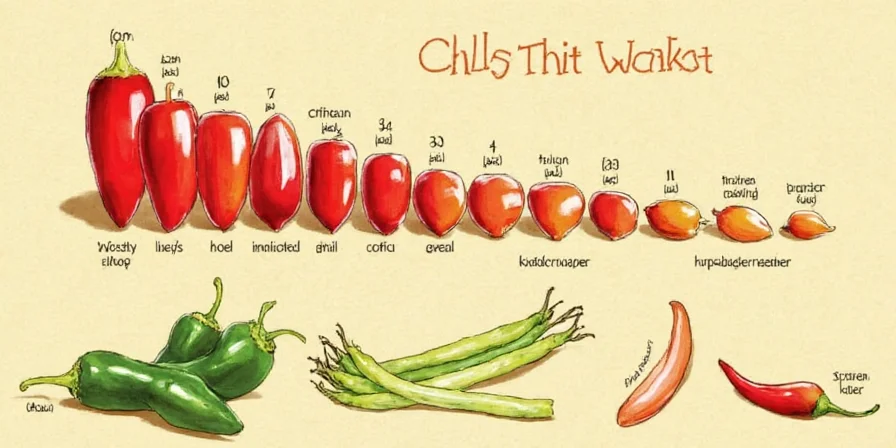









 浙公网安备
33010002000092号
浙公网安备
33010002000092号 浙B2-20120091-4
浙B2-20120091-4